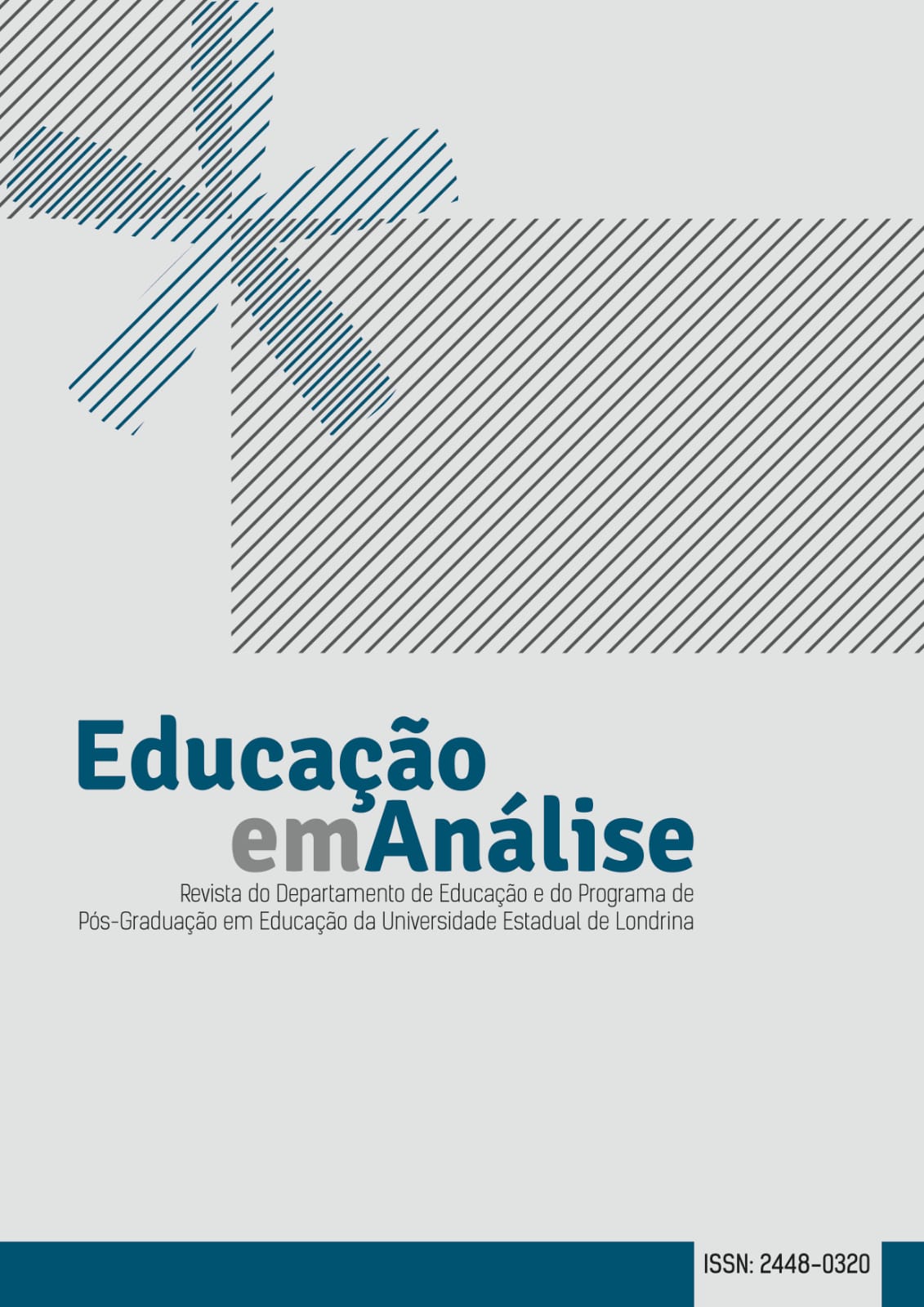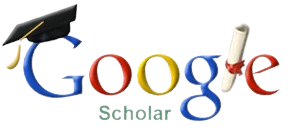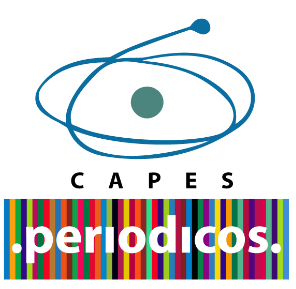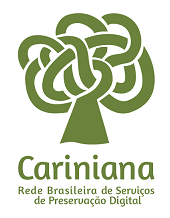Difficulties for the inclusion of autist children in regular education of Guarapuava and region
DOI:
https://doi.org/10.5433/1984-7939.2023v8n2p379Keywords:
Transtorno do espectro autista (TEA), Inclusão autista, Autismo na escola.Abstract
Autism spectrum disorder is characterized by disturbances in the development of the areas of communication, social interaction and behavior. The present study seeks to assess whether children with autism are being included in regular education with pedagogical approaches and curricular adaptations to optimize their development potential. This is a qualitative research (individual interviews) that sought to identify whether the inclusion of children is taking place and what difficulties were mentioned by parents or guardians. In all, 41 parents or legal guardians participated in the questionnaire and gave their assessments in an objective and discursive way about the inclusion of their children. The answers indicated that, in a general perspective, the school environment offers support for the development of the main areas affected by autism, but still with many deficiencies. The training of qualified professionals to work with the particularities of autistic people will enable the construction of knowledge for educational practices that favor the socio-cognitive development of students with autism spectrum disorder, as present in technical note No. 24 / 2013 / MEC / SECADI / DPEE. The results suggest that there are countless difficulties in including autistic children in regular education, including the lack of professional and school preparation and the late diagnosis of some children.
Downloads
References
BALBINO, Elizete Santos. A inclusão de uma aluna com deficiência visual na universidade estadual de alagoas: um estudo de caso. 2010. Dissertação (Mestrado em Educação Brasileira) - Universidade Federal de Alagoas, Maceió, 2010.
BAPTISTA, Claudio Roberto; BOSA, Cleonise. Autismo e educação: reflexões e propostas de intervenção. Porto Alegre: Artmed, 2002.
BARBOSA, Amanda Magalhães; ZACARIAS, Jaqueline Cruz; MEDEIROS, Kesia Natália; NOGUEIRA, Ruth Késia Silva. O papel do professor frente à inclusão de crianças com autismo. In: CONGRESSO NACIONAL DE EDUCAÇÃO EDUCERE, 11., 2013, Curitiba. Anais [...]. Curitiba: Pontifícia Universidade Católica do Paraná, 2013. p. 19776.
BATTISTI, Aline Vasconcelos; HECK, Giomar Maria Poletto. A inclusão escolar de crianças com autismo na educação básica: teoria e prática. Chapecó: Universidade Federal da Fronteira Sul, 2015.
BRANDE, Carla André; ZANFELICE, Camila Cilene. A inclusão escolar de um aluno com autismo: diferentes tempos de escuta, intervenção e aprendizagens. Educação Especial, Santa Maria, v. 25, n. 42, p. 43-56, jan./abr. 2012. DOI: https://doi.org/10.5902/1984686X3350.
BRASIL. Constituição federal da república federativa do Brasil, de 05 de outubro de 1988. Brasília, DF: Presidência da República, 1988.
BRASIL. Decreto n. 10.502, de 30 de setembro de 2020. Que veio a instituir a política nacional de educação especial: equitativa, inclusiva e com aprendizado ao longo da vida. Brasília, DF: Presidência da República, 2020.
BRASIL. Diretrizes nacionais para a educação especial na educação básica. Brasília: MEC/SEESP, 2001.
BRASIL. Lei n. 8.069, de 13 de julho de 1990. Dispõe sobre o estatuto da criança e do adolescente e dá outras providências. Brasília, DF: Presidência da República, 1990.
BRASIL. Ministério da Educação. Nota técnica n. 24/2013/MEC/SECADI/DPEE. Orientação aos sistemas de ensino para implementação da lei n. 12.764/2012. Brasília, DF: Ministério da Educação, 2013.
BRASIL. Resolução n. 4, de 02 de outubro de 2009. Institui diretrizes operacionais para o atendimento educacional especializado na educação básica, modalidade educação especial. Brasília, DF: Presidência da República, 2009.
GIKOVATE, Carla. Autismo: compreendendo para melhor incluir. Rio de Janeiro: Universidade Federal do Rio de Janeiro, 2009.
HARTUP, Willian Willard. A empresa que mantêm: amizades e seu significado para o desenvolvimento. Desenvolvimento infantil, Campos dos Goytacazes, v. 67, n. 1, p. 1-13, 1996.
HARTUP, Willian Willard. Friendships and their developmental significance. In: MCGURK, Harry (ed.). Childhood social development: contemporary perspectives. New York: Lawrence Erlbaum Associates Inc, 1992. p. 175-205.
IBGE - INSTITUTO BRASILEIRO DE GEOGRAFIA E ESTÁTISTICA. Censo 2010. Rio de Janeiro: IBGE, 2010. Disponível em: https://censo2010.ibge.gov.br/.
INCLUSÃO. In: FERREIRA, Aurélio Buarque de Holanda. Dicionário eletrônico aurélio século XXI. Rio de Janeiro: Editora Nova Fronteira; Lexikon Informática, 1999.
LAKATOS, Eva Maria; MARCONI, Marina Andrade. Técnicas de pesquisa. 3. ed. São Paulo: Editora Atlas, 1996.
MANTOAN, Maria. Teresa. Egler. A Integração de pessoas com deficiência: contribuições para uma reflexão sobre o tema. São Paulo: Memmon: Editora SENAC, 1997.
MATHIESON, Kay; BANERJEE, Robin. Preschool peer play: the beginnings of social competence. Educational and ChildPsychology, Leicester, p. 9-20, 2010. DOI 10.53841/bpsecp.2010.27.1.9.
SANTOS, Ana Maria Tarcitano. Autismo: desafios na alfabetização e no convívio escolar. São Paulo: Centro de Referência em Distúrbios de Aprendizagem, 2008.
SILVA, Maria Carmo Bezerra Lima; BROTHERHOOD, Raquel Maya. Autismo e inclusão: da teoria à prática. In: ENCONTRO INTERNACIONAL DE PRODUÇÃO CIENTÍFICA CESUMAR, 6., 2009, Maringá. Anais [...] Maringá: Centro Universitário de Maringá, 2009. p. 3.
TOLEZANI, Mariana. Son-rise: uma abordagem inovadora. Revista Autismo, São Paulo, ano 1, p. 8-10, set. 2010.
Downloads
Published
How to Cite
Issue
Section
License
Copyright (c) 2023 Educação em Análise

This work is licensed under a Creative Commons Attribution-NonCommercial 4.0 International License.
Os artigos publicados na Revista Educação em Análise estão sob a Licença Creative Commons Atribuição 4.0 Internacional, garantindo Acesso Aberto. Deste modo, os autores mantêm os direitos autorais de seus trabalhos e, em caso de republicação, solicita-se que indiquem a primeira publicação nesta revista. Essa licença permite que qualquer pessoa leia, baixe, copie e compartilhe o conteúdo, desde que a devida citação seja feita. Além disso, autoriza a redistribuição, adaptação e criação de obras derivadas em qualquer formato ou meio, incluindo uso comercial, desde que a atribuição à revista seja mantida.
A revista se reserva o direito de efetuar, nos originais, alterações de ordem normativa, ortográfica e gramatical, com vistas a manter o padrão culto da língua e a credibilidade do veículo. Respeitará, no entanto, o estilo de escrever dos autores. Alterações, correções ou sugestões de ordem conceitual serão encaminhadas aos autores, quando necessário.
As opiniões emitidas pelos autores dos artigos são de sua exclusiva responsabilidade.
























